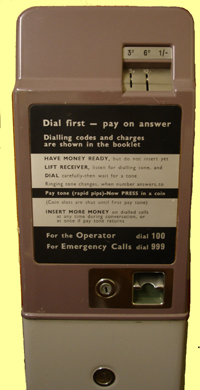 |
The Auxiliary Network was designed to handle the routing of calls which required no more than 4 links, which meant that some calls still needed to be connected with the assistance of an operator. The Transit Network overcame this limitation and made possible 100% STD access throughout the UK. |
The Auxiliary Network was designed to handle the routing of calls which required no more than 4 links, which meant that some calls still needed to be connected with the assistance of an operator. The Transit Network overcame this limitation and made possible 100% STD access throughout the UK.
The Basic Automatic Network (The Transit Network):
| 7 Links (maximum) end to end | ||||||||||||||
| Local Exchange | - | GSC | = | DSC | = | MSC | = | MSC | = | DSC | = | GSC | - | Local Exchange |
| 2 wire circuits | 4 wire circuits | 2 wire circuits | ||||||||||||
A trunk call follows the path from the Local Exchange and connects to a Group Switching Centre, through a District Switching Centre to a Main Switching Centre and onward...
Transit Switching Centres
Thus under the 1960s plan, the existing Zone and Sub-Zone Centres would also serve as TSCs ( Transit Switching Centres) and 19 new TSCs would be established, making a total of 42.
In 1960, there were 17 Zone Centres, 6 Sub-Zones and a further 19 TSCs planned.
[Compare this with the earlier table of Zone Centres.]
Glossary of Terms
| CSU | Central (London) Switching Unit | RT | Register Translator |
| DSC | District Switching Centre | SSC | Sector Switching Centre |
| FART | Fringe Area RT | SSMF2 | Signalling System Multi-Frequency 2 |
| GRACE | Group Routing And Charging | STD | Subscriber Trunk Dialling |
| GSC | Group Switching Centre | TGC | Trunk Group Centre |
| LNS | Linked Numbering Scheme | TSC | Transit Switching Centre |
| MNSC | Main Network Switching Centre | TTC | Telephone Trunk Centre |
| MSC | Main Switching Centre | ZSC | Zone Switching Centre |
| RARS | Register Access Relay Set |
All logos and trade marks are the property of their respective owners and are used on the Light Straw site(s) for review only. Students and researchers are recommended to make their own independent enquiries as to the accuracy of the information contained therein.